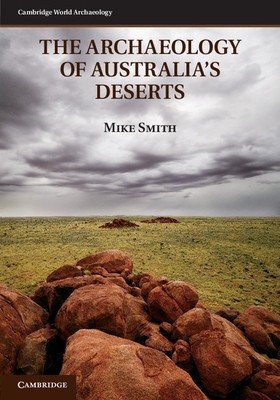
- We will send in 10–14 business days.
- Author: Mike Smith
- Publisher: Cambridge University Press
- ISBN-10: 0521407451
- ISBN-13: 9780521407458
- Format: 18.3 x 25.2 x 3.3 cm, kieti viršeliai
- Language: English
- SAVE -10% with code: EXTRA
Reviews
Description
This is the first book-length study of the archaeology of Australia's deserts, one of the world's major habitats and the largest block of drylands in the southern hemisphere. Over the last few decades, a wealth of new environmental and archaeological data about this fascinating region has become available. Drawing on a wide range of sources, The Archaeology of Australia's Deserts explores the late Pleistocene settlement of Australia's deserts, the formation of distinctive desert societies, and the origins and development of the hunter-gatherer societies documented in the classic nineteenth-century ethnographies of Spencer and Gillen. Written by one of Australia's leading desert archaeologists, the book interweaves a lively history of research with archaeological data in a masterly survey of the field and a profoundly interdisciplinary study that forces archaeology into conversations with history and anthropology, economy and ecology, and geography and earth sciences.
EXTRA 10 % discount with code: EXTRA
The promotion ends in 23d.13:31:26
The discount code is valid when purchasing from 10 €. Discounts do not stack.
- Author: Mike Smith
- Publisher: Cambridge University Press
- ISBN-10: 0521407451
- ISBN-13: 9780521407458
- Format: 18.3 x 25.2 x 3.3 cm, kieti viršeliai
- Language: English English
This is the first book-length study of the archaeology of Australia's deserts, one of the world's major habitats and the largest block of drylands in the southern hemisphere. Over the last few decades, a wealth of new environmental and archaeological data about this fascinating region has become available. Drawing on a wide range of sources, The Archaeology of Australia's Deserts explores the late Pleistocene settlement of Australia's deserts, the formation of distinctive desert societies, and the origins and development of the hunter-gatherer societies documented in the classic nineteenth-century ethnographies of Spencer and Gillen. Written by one of Australia's leading desert archaeologists, the book interweaves a lively history of research with archaeological data in a masterly survey of the field and a profoundly interdisciplinary study that forces archaeology into conversations with history and anthropology, economy and ecology, and geography and earth sciences.


Reviews